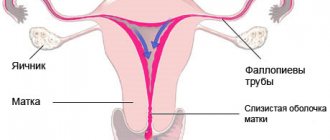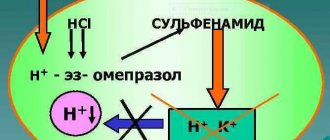Catatonia is a psychopathological syndrome with a predominance of psychomotor and autonomic disorders in the motor sphere, characterized by a clinical picture of agitation or stupor, which is unmotivated.
In the International Classification of Diseases (ICD-10), the disorder is considered within the framework of catatonic schizophrenia. This interpretation makes it difficult to diagnose the disorder.
Catatonic states of excitement and stupor can quickly replace each other. They arise autochthonously and are functional in nature. Catatonia may not be accompanied by stupefaction (lucid), or may be accompanied by oneiric stupefaction.
Catatonic stupor is characterized by increased muscle tone and immobility. Stupor can develop quickly or gradually. With gradual development, slowness, angular movements, prolonged freezing in one place (substupor), etc. initially appear. Over time, the severity of stupor increases.
Variants of motor stupor:
- Depressive;
- Catatonic;
- Hallucinatory;
- Apathetic;
- dissociative (“hysterical”);
- affective-shock.
Types of motor excitation:
- Manic;
- Anxious;
- Hallucinatory;
- Delusional;
- Affective-shock;
- Dissociative (“hysterical”);
- Against the background of confusion: delirium, twilight confusion.
Catatonic excitation develops suddenly, often rapidly moving from a state of stupor.
Catatonia is also characterized by other clinical manifestations:
Mutism is an unmotivated refusal to speak during normal functioning of the speech apparatus. Passive and active negativism is an unmotivated refusal to perform actions (for example, changing a position) or performing opposite actions. Motor and speech stereotypies - pretentiousness of movements and facial expressions. Echopraxia and echolalia are unmotivated repetition of the actions and phrases of others.
Causes
Specific reasons for the development of catatonia have not been established. The disorder may be initiated due to:
- Concomitant mental disorders (depression, bipolar disorder, schizophrenia, schizotypal disorder, acute psychosis);
- Substance and alcohol use;
- Neurological diseases (epilepsy, multiple sclerosis, Parkinson's disease, brain tumors, dementia);
- Metabolic and endocrine disorders (Cushing's syndrome, hyperthyroidism, Sheehan's syndrome);
- Autoimmune diseases (systemic lupus erythematosus, antiphospholipid syndrome), etc.
Genetic predisposition to certain mental disorders plays a great role. Some infectious diseases can also cause the development of catatonic stupor.
Catatonic disorders in the clinical picture of acute psychotic states
AV Kuznetsov IP Pavlov First St.
Petersburg State Medical University Summary
Catatonia is a psychopathological syndrome characterized by a variety of motor disorders, including stupor, exaltation and multiple symptoms.
Initially, the same cases were qualified as a subtype of schizophrenia, but later the point of view of researchers on this problem was changed towards expanding the diagnosis of catatonic manifestations among patients suffering from affective pathology, neurological and infectious diseases. Finally, the idea of catatonia as a nonspecific syndrome was formed. For syndrokinesis and syndromotaxis of catatonia patterns studying, 150 patients were examined who had acute endogenous psychoses with catatonic symptoms. Several groups were identified, characterized by a different spectrum of acute catatonic symptoms (main, additional and optional) during psychotic attacks. Differences between the groups were revealed depending on the spectrum of residual catatonic disorders. The results of this study allow us to assess the role of the underlying disease in the pathogenesis of catatonia. Keywords
: catatonia, schizophrenia, affective disorders, acute psychosis
For citation
: AV Kuznetsov. Catatonic disorders in the clinical picture of acute psychotic states. Psychiatry and psychopharmacotherapy. 2020; 5:27–31.
Pathogenesis
There is no consensus on the pathogenesis of catatonia. Studies have shown that disruption of communication between cortical structures, the thalamus and the basal ganglia play an important role in the occurrence of catatonic symptoms, therefore, in addition to clinical assessment, when studying catatonia, it is worth taking into account the results of neuroimaging and neuropsychological examinations. The hypothesis is based on a lack of gamma-aminobutyric acid (GABA) in the basal ganglia. Normally, GABA reduces the intensity of emotional reactions, such as anger, fear or anxiety.
In modern literature, there are often cases of catatonia caused by abrupt withdrawal of drugs used to treat catatonic states and accompanying mental disorders. This therapy uses mechanisms to increase GABA activity in the basal ganglia, which has a positive therapeutic effect. With abrupt withdrawal of drugs, an increase in motor symptoms often occurs (the phenomenon of “rebound catatonia”).
It is possible that catatonia develops as a result of severe anxiety, in response to stress. Therefore, scientists suggest that catatonic states are directly related to affective and other mental disorders that are accompanied by symptoms of severe anxiety.
Differential diagnosis
Catatonia is most common in depression and other mood disorders. In second place is hysteria (dissociative disorder). Catatonic stupor or agitation also occurs with organic brain lesions after traumatic brain injury and other damage to the central nervous system. Epilepsy in its manifestation sometimes includes catatonia. Psychoses against the background of severe infections, intoxications, and vascular diseases of the brain can occur with catatonic disorders. To exclude other mental, neurological and physical diseases, long-term inpatient observation and thorough examination by both a psychiatrist, a neurologist and a therapist are necessary.
Catatonic schizophrenia - a story of a disease
After his marriage, the 30-year-old mechanic developed strange behavior: withdrawn, unsociable. He answered his wife’s questions in monosyllables or ignored the woman. When he did not return home to spend the night, his wife found him sitting on a bench: the man sat motionless and looked into the distance, did not answer questions. He was taken to the hospital, where he did not understand who he was, was in a motionless position and resisted when they tried to change the position of his body. Persistent mutism and negativism were observed for 20 days. After receiving the necessary therapy, I came out of the stupor. When asked about his previous condition, he answered that he “didn’t know how to speak.” For the next two years, no psychopathologies were observed, after which he fell ill for no apparent reason. The speech was broken, incoherent and accelerated. The excited state was replaced by stupor. I stood at the station in a motionless position for several hours in a row. He was noticed by police officers, after which the patient was taken to the hospital. The recovery from the state of stupor took a long time.
Symptoms
There are many clinical signs of catatonic syndrome. Symptoms are often related to the motor area. With catatonic stupor, the patient becomes numb or completely immobile. Muscle tone is increased, especially in the head and shoulder girdle. The chewing muscles are toned, the lips are pulled forward (proboscis symptom), the person lies on his back, holding his head above the pillow (the “air cushion” symptom). Less severe conditions occur in the form of catalepsy. Muscle tone may alternate with complete relaxation, and epileptiform seizures are sometimes observed. The state of catatonic excitement is characterized by incoherent speech, absurd rhyming, and echolalia.
In severe cases, the attack of stupor with catalepsy is prolonged, mutism, lack of reaction of the pupils to intense painful stimuli (Bumke's symptom), and persistent insomnia are noted.
Stupor may be accompanied by oneiric stupefaction, delusions and hallucinations. Motor disturbances manifest themselves in combination with a feeling of stiffness of the body and the inability to move, with stupor, or a feeling of muscle looseness with motor excitement.
In catatonic states, the following symptoms may occur:
- catatonic stupor or substupor - complete or partial immobility, often in a sitting or standing position;
- catalepsy - a person remains in one position for a long time;
- waxy flexibility - long-term preservation of the position that another person gives the patient;
- negativism—resistance when another person tries to change the patient’s position;
- mutism – prolonged silence;
- stereotypy - repeated monotonous movements;
- catatonic agitation - increased disordered motor activity;
- echolalia/echopraxia - copying the words and movements of another person;
- pretentiousness of facial expressions and movements.
In addition to the main symptoms, manifestations of disruption of the autonomic nervous system may occur. With catatonia, there may be an increase in body temperature to subfebrile, a feeling of thirst, increased blood pressure, and tachycardia. Often patients refuse water and food.
The detailed picture of catatonic stupor and agitation does not differ in clinical manifestations in adolescents and adults. Oneiric catatonia often occurs against the background of the manic phase in schizoaffective psychosis; it is much less common in depression and attacks of fur-like schizophrenia, especially in adolescents. Hebephrenic syndrome is characteristic of adolescence and the malignant course of schizophrenia. As a rule, catatonic symptoms appear against the background of this syndrome.
Fibril catatonia develops with symptoms of oneiric, neurological and somatic disorders. A febrile attack is characterized by manic-delusional, hallucinatory and depressive syndromes. With more pronounced psychosis, fantastic delirium appears. The patient is in a state of agitation or stupor.
Body temperature rises sharply to febrile and higher. There is no relationship with somatic and infectious diseases. Blood pressure rises, tachycardia and increased sweating are present. The person is in an excited state and feels very thirsty. Excitement gives way to stupor or sub-stupor. General health worsens. The feeling of thirst and hunger disappears, the skin becomes dry, and swelling appears. If assistance is not provided in a timely manner, congestion in the lungs, bedsores and other complications may develop.
Most often, attacks of febrile catatonia are observed in people 41-50 years old. They are characterized by a severe course and a high risk of death.
With primary manifestations of catatonia, you should immediately consult a doctor. With timely diagnosis and effective treatment, the condition can be normalized without further development of complications.
Story
As an independent mental disorder, the catatonic form of schizophrenia was first described by the German psychologist Karl Ludwig Kahlbaum in the sixties of the 19th century. He announced this syndrome at a congress of psychiatrists in Innsbruck, noting that he has special symptoms that, in addition to the emotional sphere, also affect the motor sphere.
Kahlbaum's disease, as it is often called in memory of its discoverer, can appear in people under 50 years of age at any period of life, even in the youngest. In children it can be determined by monotonous movements of the body, in children 5–6 years old - by sniffing and licking surrounding objects. But usually catatonia strikes people aged 16–30 years. The first signs appear earlier in males.
It should be noted that earlier, until the fifties of the twentieth century, such a serious disease occurred quite often, especially among young people, but since then this trend has declined. Currently, only 1–3 patients with schizophrenia are diagnosed with it.
Classification
Catatonic states are classified based on the severity of clinical manifestations and the nature of the course of the disorder. Currently, there are two types of catatonia: benign and malignant. Malignant catatonia is the most severe form of the disorder and poses a threat to the patient’s life (“lethal” or “febrile” catatonia).
Febrile catatonia is an acute mental disorder accompanied by a deterioration in general physical condition: increased body temperature, somatovegetative disturbances, homeostasis disorders, deterioration in the functional ability of body systems. The condition develops without connection with somatic diseases. With such a course of the disorder, there is a possible risk of developing cerebral edema and multiple organ failure
Catatonia that occurs at the onset of the disease is considered primary (often observed in schizophrenia). If catatonic manifestations develop against the background of a prolonged course of the disease, catatonia is secondary.
Often in psychiatry, a classification of catatonia is used, based on the pattern of the underlying disorder and the predominance of catatonia syndrome over other symptoms. According to these signs, minor and extensive catatonia are distinguished.
Mild (small) catatonia
. is a reduced version of the catatonic syndrome, in which some simple manifestations are present. Negativism is not clearly expressed, substuporous states, short-term stops of movements and speech, episodic echolalia, isolated grimaces and unexpected actions are noted. The patient enters into dialogue only under duress, is reluctant to answer questions, his speech is mannered, and he avoids visual and tactile contact with the interlocutor. This condition is most often observed in developing schizophrenia.
According to the degree of severity, catatonic excitation is:
- ecstatic - patients are mobile, talk a lot;
- hebephrenic - ridiculous, inappropriate jokes, unmotivated and unreasonable gaiety predominate;
- impulsive - unexpected actions, often destructive and aggressive;
- silent - motor agitation with aggression and destructive actions.
Silent (mute) catatonic agitation
. The person makes meaningless, chaotic movements and resists other people’s attempts to help. During this period of arousal, there is a risk of harm to yourself and others.
Impulsive catatonic agitation
. Development is fast. A person copies the movements and phrases of nearby people. Speech is limited to a chaotic set of phrases. There is a tendency towards cruelty and destructive actions, and a high risk of self-injury.
Ecstatic
. Symptoms increase gradually. At the beginning, there is little motor and speech activity. The nature of the speech is mannered, echolalia (copying other people's words) is possible, and laughter often occurs for no apparent reason.
Degrees of severity of catatonic stupor:
Cataleptic
(with waxy flexibility). Muscle tone is increased, a person can maintain an uncomfortable position for a long time. Manifested by symptoms: catalepsy, waxy flexibility (maintains a position devoted to another person), “air cushion” (characteristic position on the back with the head raised above the pillow).
With negativism
. More pronounced muscle tension. There is sharp opposition to passive movements and attempts by other people to change the patient’s posture. Mutism is often observed.
Rigid
. Muscle tone is very pronounced. Due to the predominance of flexor muscle tone, the person is in the fetal position (knees brought to the stomach, hands pressed to the chest). Trying passive movements increases muscle tension. Muscle tone decreases during deep sleep.
Catatonic states are divided into two types - oneiric and lucid, depending on the presence of clouding of consciousness. With oneiric clouding of consciousness, ecstatic, impulsive, hebephrenic excitement, stupor with waxy flexibility and substuporous states develop. With lucid catatonia, stupor with negativism often develops.
Oneiric catatonia
combines a state of stupor and a dream-like state with vivid scene-like hallucinations, which the patient can talk about after emerging from the stupor. During stupor, the patient is most often disoriented and unable to perceive surrounding events; perception occurs in a distorted form with dream-like fantasies.
Lucid catatonia
represents a stupor without clouding of consciousness. The perception of what is happening around is not distorted. The patient is normally oriented in time and space, remembers the events that occurred while in a stuporous state. Sometimes partial amnesia occurs regarding one's own movements and behavior. The patient may not remember his own impulsive actions, prolonged immobility, etc.
Taking into account diagnostic approaches, catatonia is classified according to provoking factors:
Catatonia developed against the background of concomitant mental disorders. Most often, catatonic schizophrenia is considered (if motor disorders are the main clinical symptoms of the disorder), affective disorders with catatonic symptoms, and others.
Catatonia due to somatic illness. Catatonic syndrome may indicate neurological, infectious and other diseases with metabolic disorders.
Unspecified catatonia. Catatonic states without correlation with other mental and somatic disorders.
Introduction
The nosological affiliation and specificity of the manifestations of catatonic syndrome have long been the subject of scientific discussion. In the monograph “Die Katatonie oder das Spannungirresein” Karl Kahlbaum associated the development of catatonia primarily with affective disorders (both depression and mania). [16]. The dominant view was that catatonia was a nonspecific complication of mental disorders of both endogenous and organic origin. Significant changes in the diagnostic classification of catatonia occurred after Emil Kraepelin classified catatonia as a manifestation of dementia praecox. [12]. A number of well-known researchers have considered catatonic symptoms as a characteristic sign of schizophrenia spectrum disorders. [5]. At the same time, Karl Jaspers rejected the opinion that catatonic disorders are a consequence of schizophrenia, and considered them as a separate nosological unit [11]. In domestic psychiatry, catatonic syndrome was also considered mainly within the framework of schizophrenia, traditionally subdivided into the oneiric variant, characteristic of acute psychotic attacks, and lucid catatonia. At the same time, the presence of catatonic disorders in organic, symptomatic psychoses was allowed [1]. A revision of views on the place of catatonia within mental disorders occurred in the 70s of the last century. At that time, J. Morrison, in several publications, highlighted the issue of the occurrence of catatonia in affective pathology [13, 14, 15]. In 1976, R. Abrams and MA Taylor, based on large-scale studies, described the high incidence of catatonic disorders in affective pathology, in particular in manic states. [2, 3]. A. Gelenberg identified a connection between catatonia and neurological, as well as general somatic disorders, suggesting that catatonia should be considered as a nonspecific syndrome [9]. Gradually, more and more descriptions of catatonia appeared as a complication of somatic diseases (infectious, toxic, metabolic, autoimmune) [4, 10]. M. Fink and MA Taylor expressed the opinion that catatonic disorders should not be associated with schizophrenia, and the most correct is to consider it as a general psychopathological syndrome that does not have nosological specificity. [6, 7, 8]. Currently, the view of catatonia as a nonspecific syndrome is becoming increasingly widespread. The evolution of views on the diagnostic affiliation of catatonic disorders is reflected in the latest versions of classifications of diseases (ICD, DSM). The described changes in the clinical picture, course and outcomes of a number of mental disorders encourage psychiatrists to study the external and internal factors in connection with which such phenomena arise. The study of syndrokinesis and syndromotaxis in catatonia is one of the aspects of this problem, the solution of which will help improve diagnosis and assess the prognosis of the disease. The purpose of the study
was to study the occurrence, dynamics of development and regression of catatonic symptoms, its relationship with other psychopathological manifestations in patients who had suffered acute psychotic states.
Complications
The development of complications is often associated with late diagnosis and incorrect approach to treating the disorder.
When treating people with severe forms of catatonia, difficulties may arise in the daily care of patients, as a result of which complications may develop:
- aspiration pneumonia - occurs due to the difficulty of eating in patients with mutism and the risk of aspiration;
- risk of deep vein thrombosis and pulmonary embolism due to immobility in people with catatonia;
- metabolic disorders associated with dehydration and exhaustion of the body - patients with catatonia may not eat or drink for a long time;
- disorders of the gastrointestinal tract (constipation, intestinal obstruction, etc.)
- urinary retention or incontinence;
- neuromuscular complications (flexion contracture, nerve palsy)
- formation of bedsores.
Also, in a state of catatonic excitement, the patient poses a danger to himself and others. The sudden onset of an attack of stupor can lead to an accident, overtaking a person driving a car, while crossing the road, at work, etc.
Complications of severe forms of catatonia are difficult to treat due to the difficulties in contact between the patient and the doctor.
Psychotherapy and rehabilitation for catatonic schizophrenia
Catatonic schizophrenia requires an individual approach to therapy. Along with the use of medications, complex treatment includes psychotherapy and rehabilitation measures. They help to re-form or restore cognitive functions, motivational and emotional resources lost due to illness. After working with a psychotherapist, a person receives:
- skills and knowledge necessary for life;
- ability to interact with other people;
- ability to solve problems.
To improve the condition of patients with catatonic schizophrenia, a set of interventions is used to fully or partially restore their own potential, which helps them integrate more easily into society. Methods are selected for each patient individually. In this case, the doctor takes into account the characteristics of the condition and the degree of social maladjustment, which are determined during the treatment of schizophrenia.
The specialist helps them understand the causes of their loved one’s illness, teaches them how to behave correctly so as not to provoke a worsening of their condition, and gives useful advice on care. As a result, the atmosphere in the family is normalized, which has a beneficial effect on the prognosis and duration of remission in a person suffering from catatonic schizophrenia.
Diagnostics
When diagnosing catatonic states, it is important to correctly assess the patient’s clinical condition. When collecting anamnesis and examination, it often turns out that the person used psychoactive substances, which most likely contributed to the development of catatonic syndrome. It is worth considering the likelihood of developing symptoms of catatonia during treatment with psychotropic drugs for concomitant diseases.
Psychometric scales are used to diagnose the disorder. The most commonly used is the Bush-Francis Catatonic Disorder Scale. It allows you to determine the presence and severity of catatonic symptoms over a certain period of time. Other rating scales are also used.
Electroencephalography (EEG), CT, MRI and neuropsychological examinations allow us to suggest the localization of disorders in the brain and diagnose the functional state of higher mental functions.
Differential diagnosis is carried out with other mental and somatic disorders accompanied by motor disorders. The most clinically similar to the catatonic syndrome is Parkinson's disease, but the disease is accompanied by a number of specific symptoms that make it possible to differentiate it from catatonia (tremor, apraxia of walking).
Catatonia is differentiated from schizophrenic catatonia, acute psychoses with motor agitation, conversion disorders and other conditions with severe motor retardation or agitation, and neurological symptoms.
conclusions
Based on the results of cluster analysis, three groups of patients were identified, differing in the structural and dynamic characteristics of the catatonic syndrome and the characteristics of the course of the disease.
A number of factors have been established that determine the heterogeneous nature of catatonic manifestations in endogenous spectrum psychoses. Regardless of the diagnostic affiliation, the ratio of affective and hallucinatory-delusional symptoms in the structure of attacks, as well as their representation at the stages of the disease, largely determined the features of catatonia syndrome and the degree of its reduction by the time of remission. Residual catatonic symptoms, represented mainly by parakinetic disorders, were more often combined with severe hallucinatory-delusional disorders. The most severe and chronic forms of catatonia were observed mainly among patients suffering from schizophrenia, which corresponds to the identified patterns of influence of the course and leading symptoms on the nature of catatonic disorders. Thus, the study of syndromokinesis and syndromotaxis of catatonia allows not only to assess the prognosis of the disease, but also to determine the management tactics for patients with similar mental disorders. Information about the authors:
Kuznetsov Arseny Vasilievich
- full-time graduate student of the Department of Psychiatry and Narcology, State Budgetary Educational Institution of Higher Professional Education of the Ministry of Health of the Russian Federation "First St. Petersburg State Medical University named after. acad. I.P. Pavlova." Email
Forecast
Mild forms of catatonia usually do not have a strong impact on the patient’s further social adaptation and respond well to treatment. Treatment is carried out in a psychiatric hospital. In case of severe somatic diseases, hospitalization is carried out in a specialized department (neurological, oncological). A poor prognosis is associated with catatonia of a malignant course, due to the risk of death, and the presence of catatonia in children, adolescents and the elderly with schizophrenia. Such people require constant psychiatric treatment. Relapses of catatonic states most often occur with the idiopathic version of the disorder or in the presence of concomitant affective disorders. If a person has renal failure, Parkinson's disease, or alcohol addiction, the dysfunction of the brain is chronic, which can also lead to relapses.
In most cases, the prognosis of catatonic syndrome depends on the course of the underlying disease and timely treatment.
Materials and methods
150 patients aged from 19 to 80 years (average value - 42.83±14.65 years) suffering from schizophrenia, bipolar affective and schizoaffective disorders were examined. Each diagnostic group consisted of 50 people. The study included patients admitted to a psychiatric hospital as an emergency hospitalization. Selection was carried out using the screening block of the verified Bush Fransis Catatonia Rating Scale (BFCRS). The criterion for inclusion in the study was the presence of 4 or more points when assessed by the BFCRS screening block. Exclusion criteria were severe comorbid organic, drug-related pathologies. All patients were assessed using the full version of the BFCRS to assess their symptom profile. Repeated assessment of the BFCRS was also carried out at the stage of relief of the psychotic state. Residual catatonic symptoms, their compliance with screening criteria, as well as persistent residual psychopathological symptoms were recorded. The distribution of quantitative data was checked for normality using the Shapiro-Wilk test. To describe quantitative data with a normal distribution, the following were used: arithmetic mean (M) and standard deviation (SD), presented as M(SD). Absolute values and percentages were used to describe qualitative data. Nonparametric statistics methods were used to assess differences between data that were not normally distributed. In the case of comparison of mean values of quantitative data in independent samples, the Mann-Whitney test and the Kruskal-Wallis test were used. Comparisons of qualitative data in the case of independent groups were performed using Pearson's chi-square as well as Fisher's exact test. In the course of data systematization, cluster analysis methods were used. Differences were considered statistically significant at p<0.05.
Treatment in Re-Alt
When treating catatonia that has developed against the background of another mental or physical disorder, therapy is aimed mainly at the underlying disease. Therefore, it is very important for the effectiveness of treatment to conduct a thorough diagnosis. At the Re-Alt mental health center, specialists conduct a detailed analysis of each clinical case and assess the patient’s mental and somatic status in order to individually select treatment tactics.
The most effective method of treating catatonia is the use of drugs from the group of benzodiazepine tranquilizers. Pharmacotherapy helps reduce muscle tone and eliminate other manifestations of catatonia. Treatment uses drugs with sedative, anticonvulsant effects, and muscle relaxants.
If drug treatment is ineffective, electroconvulsive therapy may be prescribed.
Febrile catatonia is a medical emergency. Treatment is carried out inpatiently. Measures are prescribed to maintain and normalize the functioning of all body systems. Antibacterial therapy is prescribed to prevent complications. After stabilization of the condition, electroconvulsive therapy is performed
Questions and answers
Is it necessary to use psychotherapy in patients with schizophrenia?
Conducting sessions with a psychotherapist for any form of schizophrenia allows a person to better understand their condition and be able to at least partially control its manifestation. Many patients with this diagnosis in the early stages during the period of remission do not differ from ordinary people and can communicate normally. To ensure that the presence of an illness does not lead to a decrease in self-esteem and a desire to retire from society, the participation of a psychotherapist is required.
How dangerous is a mentally ill person with schizophrenia to others?
The patient's danger level is not as great as is commonly believed. But at the slightest manifestation of unmotivated aggression, it is necessary to contact the treating psychiatrist for correction of drug therapy. The best option for helping a person who is in an inadequate state would be to call a psychiatrist at home.









